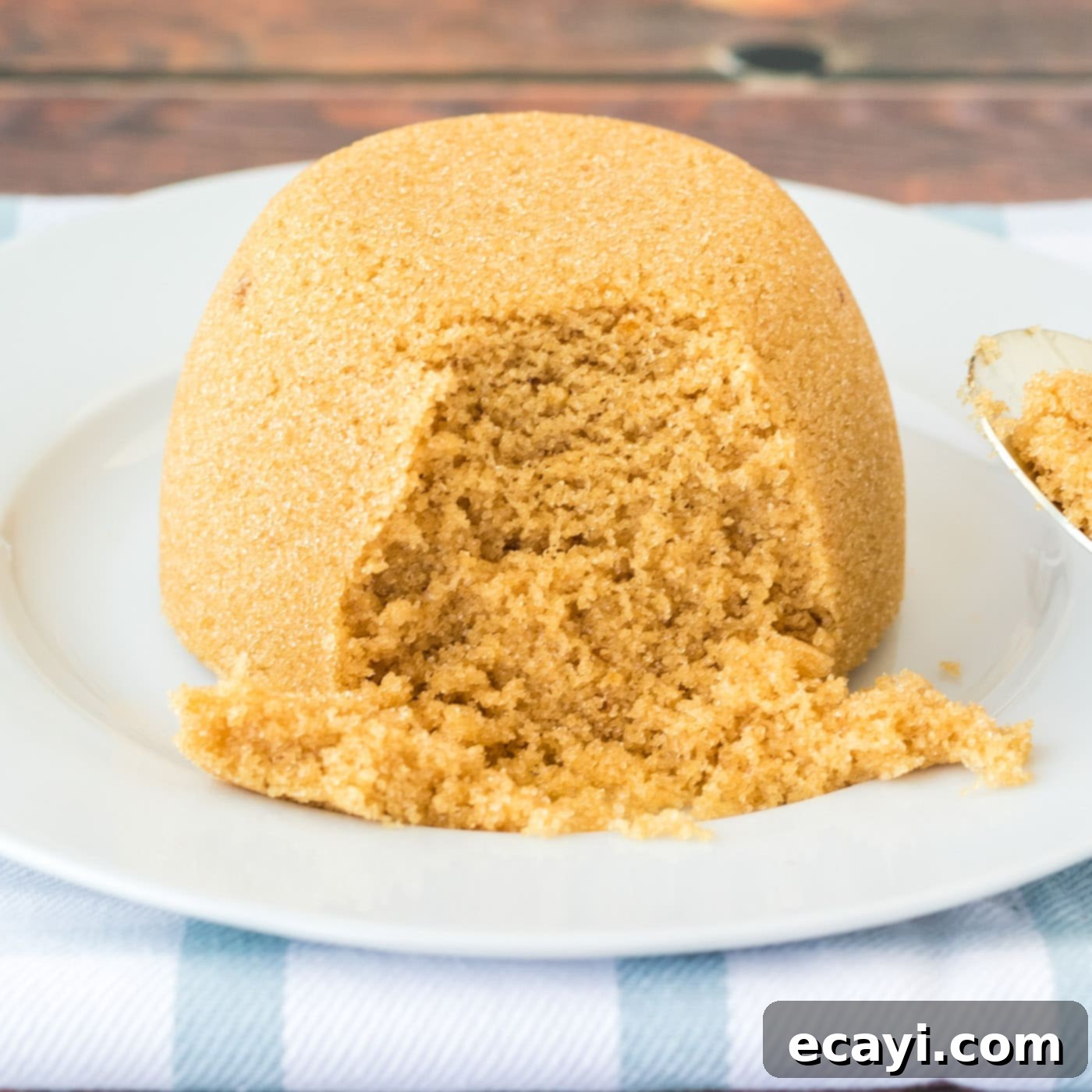How to Make Brown Sugar Substitute at Home: Your Quick 2-Ingredient Solution
Discover how to effortlessly create your own brown sugar substitute right in your kitchen with just two simple ingredients: granulated sugar and molasses. This homemade version is not only incredibly easy to prepare in a pinch when you’ve run out of store-bought, but it can also be prepped and stored for future use, ensuring you always have this versatile sweetener on hand. Perfect for elevating both your sweet and savory culinary creations, this quick DIY method saves you a trip to the grocery store and offers a fresh, flavorful alternative.
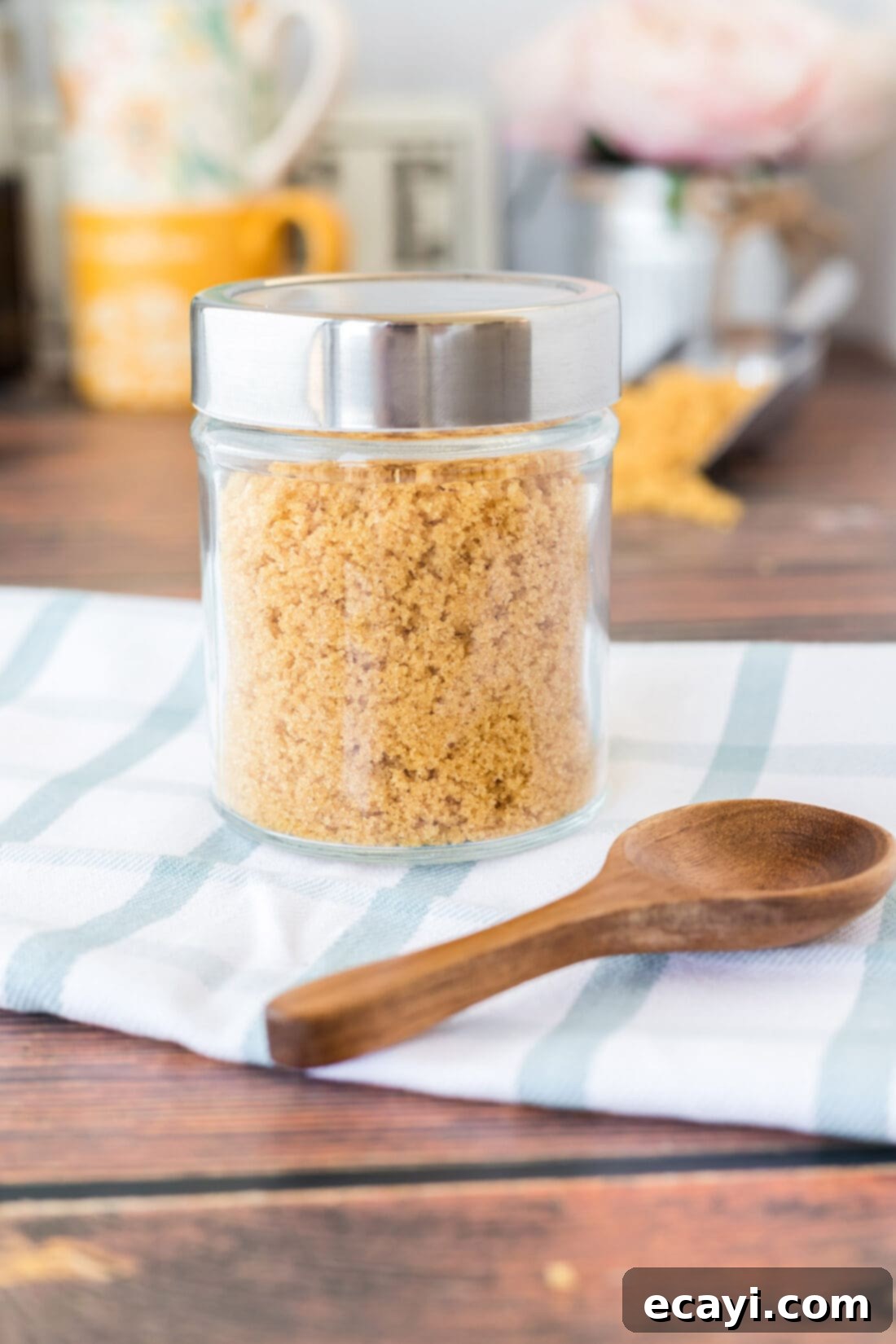
Why This Homemade Brown Sugar Recipe Is a Game-Changer
Whether you’ve suddenly realized your brown sugar container is empty mid-recipe or you’re simply looking for a more economical and convenient way to keep this essential ingredient stocked, this easy two-ingredient brown sugar substitute recipe is the perfect solution. All you truly need are granulated sugar and molasses, two staples often found in most pantries. This simple combination transforms ordinary white sugar into a flavorful, moist, and aromatic brown sugar that performs beautifully in all your favorite recipes.
One of the greatest advantages of making your own brown sugar is its incredible shelf life. Once prepared, it can remain fresh in an airtight container for up to three months, ensuring you’re never caught off guard again. This extended storage means you can whip up a larger batch and always have it readily available when inspiration strikes for a delicious dessert or a savory glaze.
Brown sugar is celebrated for the distinct caramelly, rich flavor it imparts, which is crucial for a wide array of dishes. From sweet treats like a classic pineapple upside down cake or chewy cookies, to savory delights such as glazed carrots and barbecue sauces, brown sugar adds a depth and complexity that regular granulated sugar simply cannot replicate. Attempting to substitute with regular white sugar when you’ve run out of brown sugar results in a noticeable lack of the characteristic flavor, moist texture, and appealing golden-brown color that brown sugar recipes are known for. Don’t compromise on flavor or texture; invest just five minutes to make your own and experience the difference!
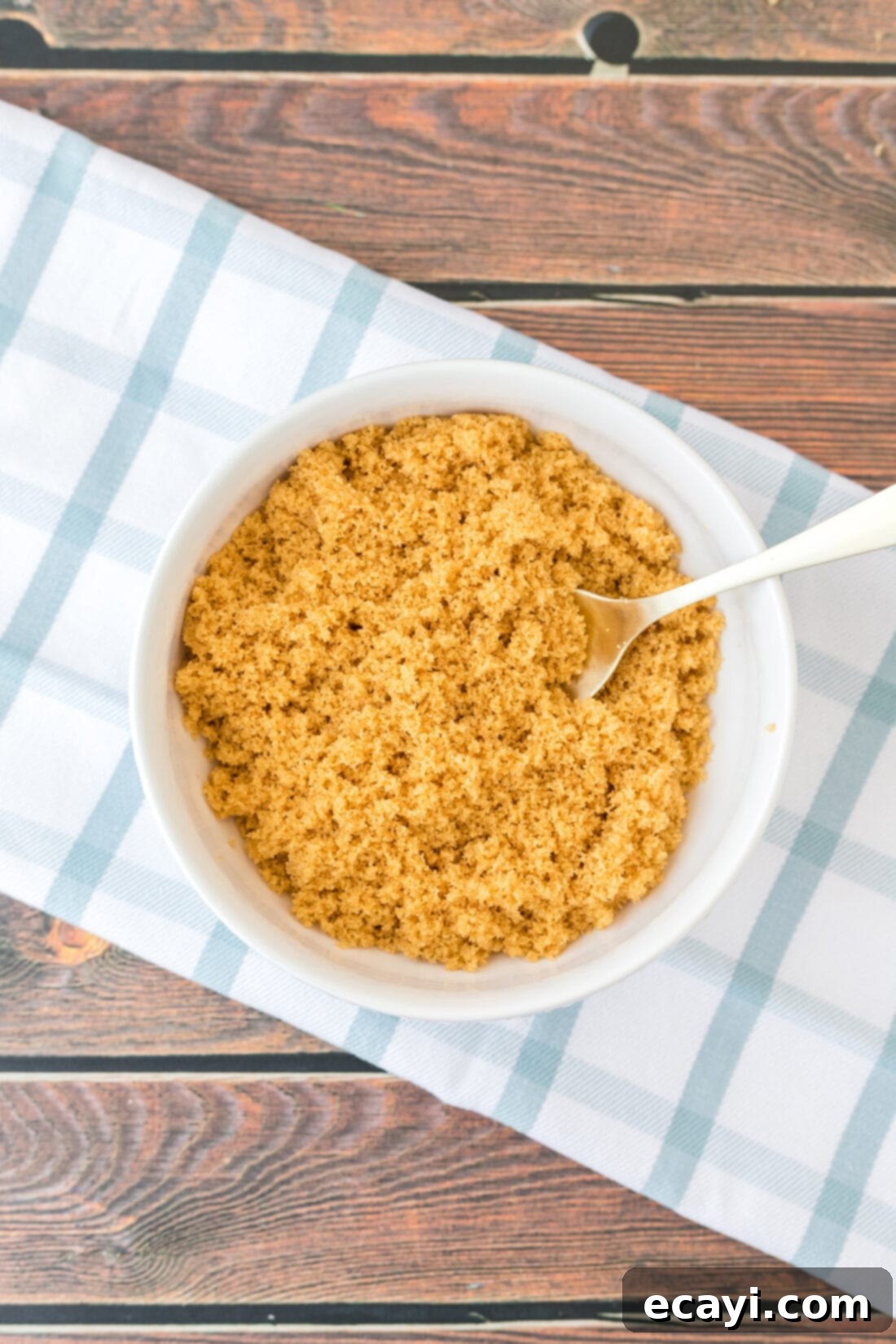
Essential Ingredients for Your DIY Brown Sugar
Crafting your own brown sugar is surprisingly straightforward, requiring minimal ingredients that are likely already in your kitchen. For precise measurements and detailed instructions, refer to the printable recipe card located at the end of this comprehensive guide. The magic of this recipe lies in the simple yet powerful combination of these two key components:
- Granulated White Sugar: This forms the base of your brown sugar. Standard white granulated sugar works perfectly as it provides the necessary sweetness and crystalline structure to absorb the molasses.
- Molasses: The star ingredient that gives brown sugar its signature flavor, color, and moisture. Blackstrap molasses or regular molasses can be used, with variations impacting the final depth of flavor and color.
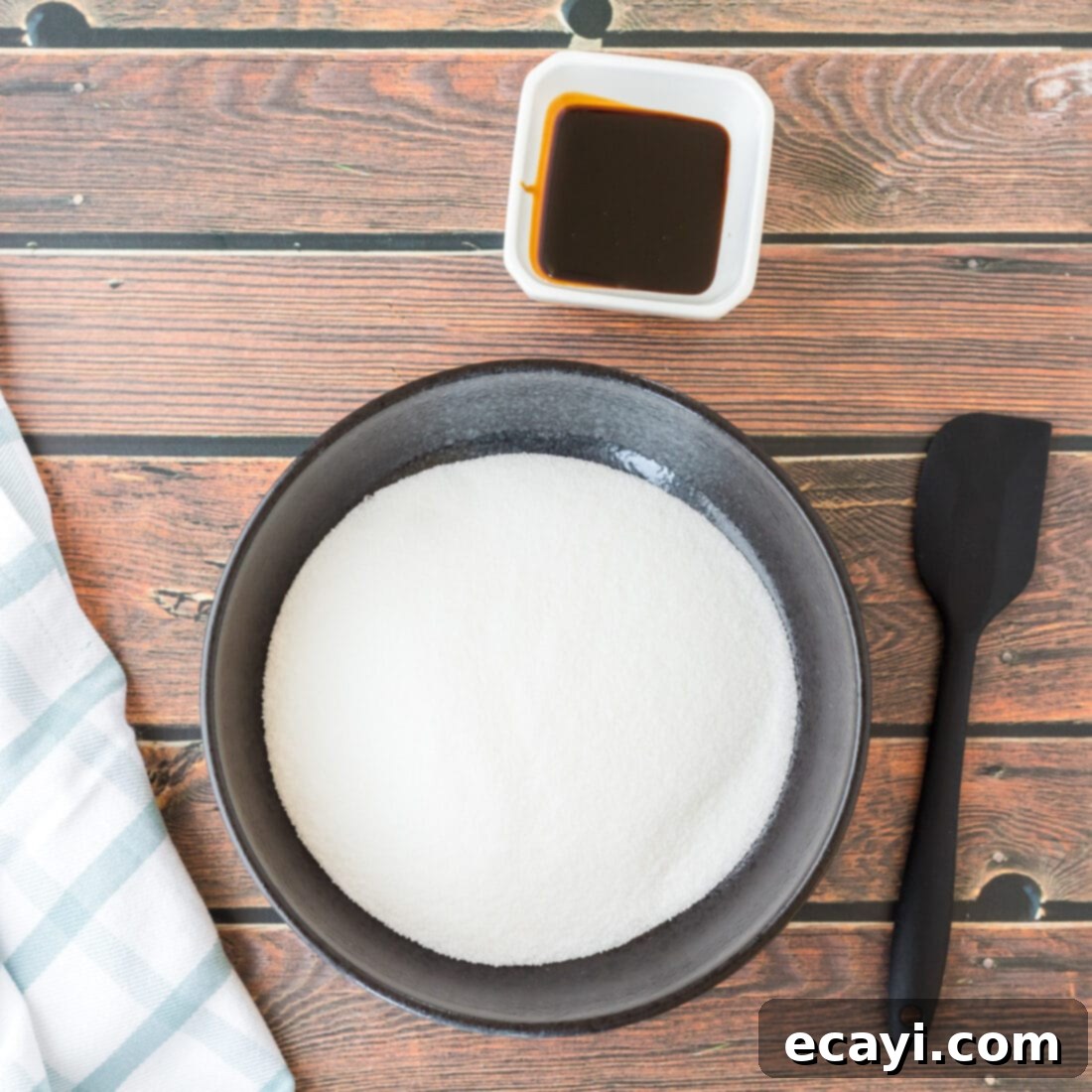
Ingredient Insights and Smart Substitution Tips
Understanding the role of each ingredient is key to perfecting your homemade brown sugar. While this recipe is incredibly simple, a few insights can ensure optimal results:
MOLASSES – Molasses is unequivocally the most critical component in this brown sugar substitute. It is the byproduct of refining sugarcane or sugar beets into sugar, and its distinctive rich, slightly smoky, and deeply sweet flavor, along with its color and moisture, is what transforms white sugar into brown. It also contains minerals like iron and calcium, adding a subtle nutritional boost. For this recipe, it’s crucial to use actual molasses. While other syrups like maple syrup, honey, or corn syrup might seem like plausible substitutes, they will not yield the same characteristic flavor, color, or texture that defines brown sugar. Maple syrup, for example, would give you maple-flavored sugar, not brown sugar. Stick with genuine molasses for authentic results.
GRANULATED SUGAR – Standard white granulated sugar is ideal for this recipe. Its fine crystals readily absorb the molasses, making it easy to achieve an even consistency. You can use organic cane sugar as well, which will work similarly. The goal is to provide a neutral base that can be infused with the molasses flavor and color.
Step-by-Step Guide: How to Make Brown Sugar Substitute
These step-by-step photos and instructions are here to help you visualize how to make this recipe. For a printable version of this recipe, complete with precise measurements and instructions, scroll down to the recipe card at the bottom of this post.
- In a medium mixing bowl, combine the granulated white sugar and molasses.
- Using gloved fingers (this prevents the molasses from sticking to your hands and ensures an even mix), begin rubbing and pressing the molasses into the sugar.
- Continue to mix vigorously, breaking up any clumps, until the molasses is completely incorporated into the sugar. The mixture should transform from white granular sugar to a uniform, moist, light brown color with a soft, pliable texture. Ensure no streaks of liquid molasses remain visible. This process usually takes about 3-5 minutes of consistent kneading.
- Once fully combined, transfer your homemade brown sugar substitute to an airtight container. Store it at room temperature. It will stay fresh for up to 3 months.
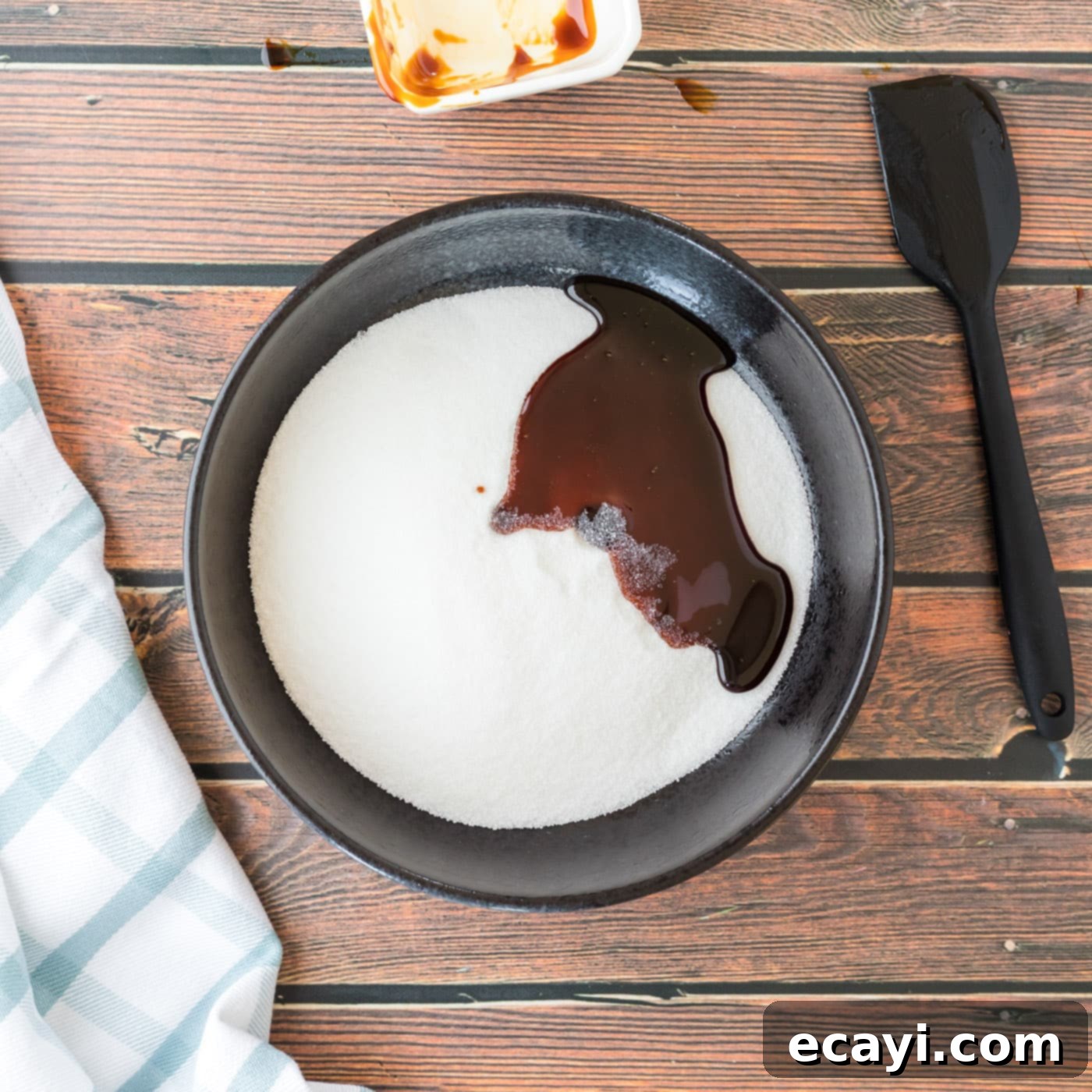
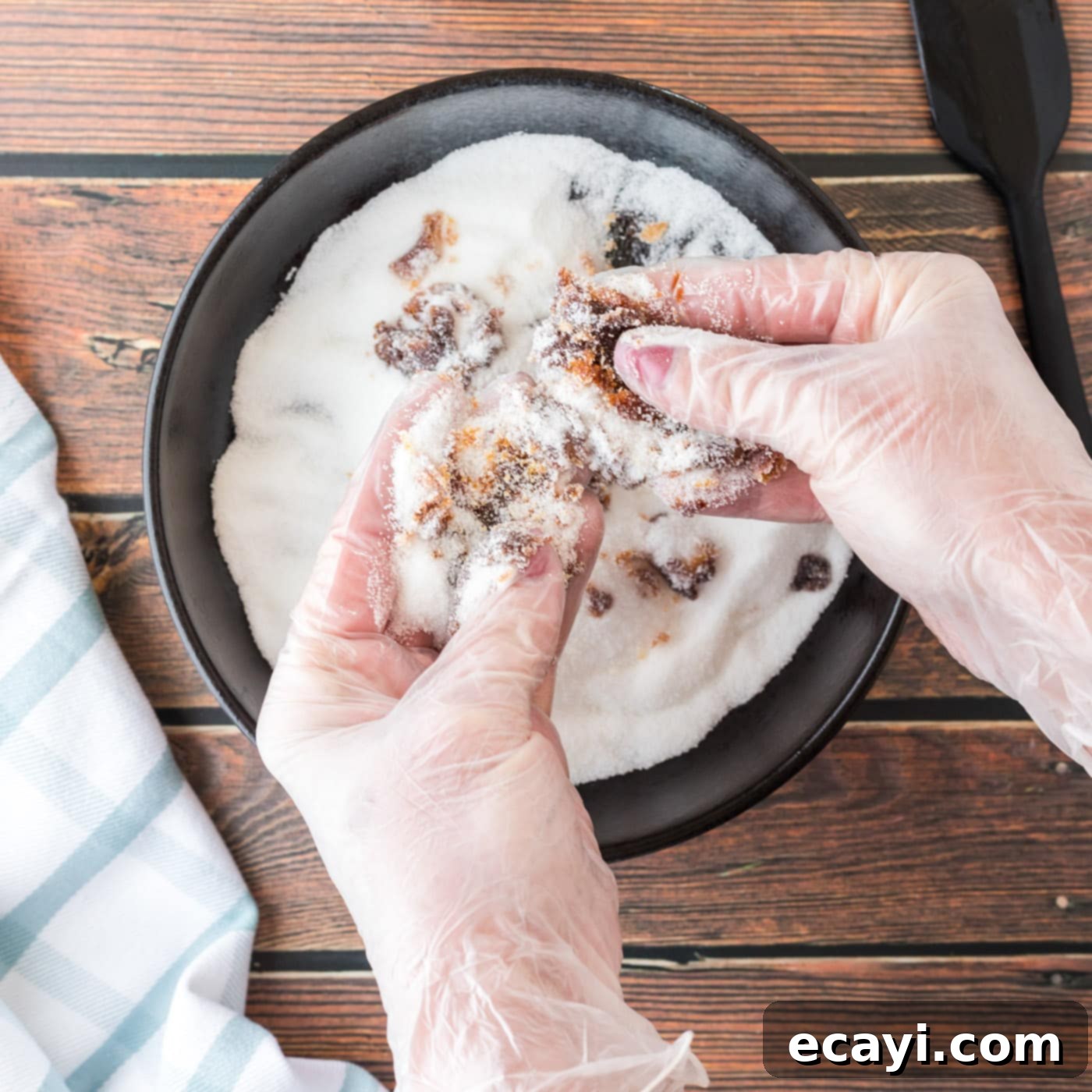
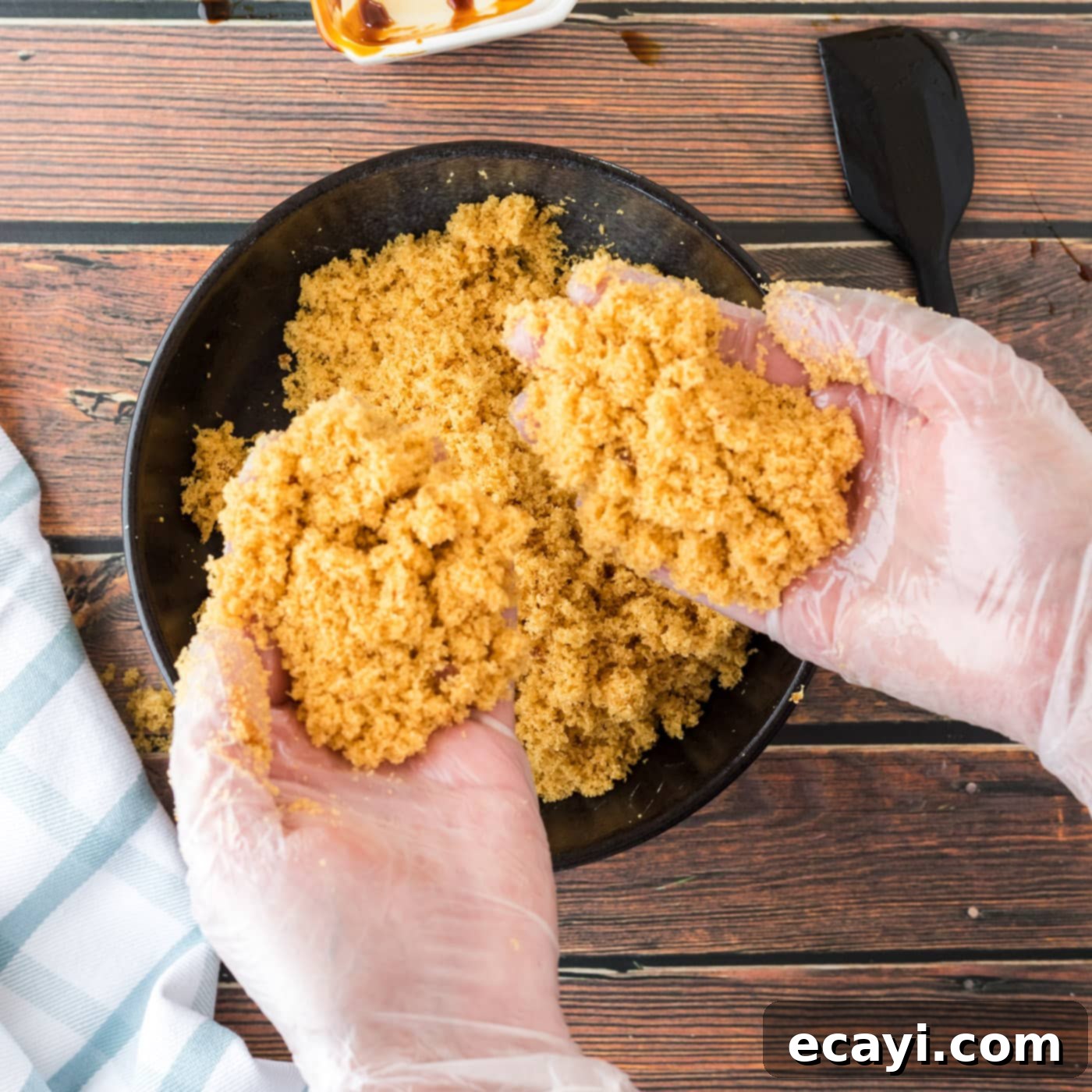
Frequently Asked Questions & Expert Tips for Perfect Homemade Brown Sugar
To ensure your brown sugar substitute remains soft and fresh, proper storage is key. Always store it at room temperature in an airtight container with a tightly sealed lid, or in a sealed zip-top bag with as much air removed as possible. This prevents moisture loss, which is what causes brown sugar to harden. When stored correctly, your homemade brown sugar substitute can last for up to 3 months. If it does harden slightly, a common trick is to place a slice of bread or a few apple slices in the container overnight; the moisture from these items will soften the sugar.
The base recipe provided here yields a light brown sugar, which is perfect for most everyday baking and cooking needs. However, you can very easily transform it into dark brown sugar by simply adding an extra tablespoon of molasses to the mix. The only difference between light and dark brown sugar is the molasses content; more molasses results in a richer, deeper flavor profile and a darker color. Dark brown sugar is often preferred in recipes where a more robust molasses flavor is desired, such as in gingerbread, barbecue sauces, or certain types of fruitcakes, and can even contribute to a more pronounced golden color in your baked goods.
Absolutely! A food processor is an excellent tool for making brown sugar, especially if you’re preparing a larger batch or want to minimize hands-on mixing. Simply combine the granulated sugar and molasses in the food processor bowl and pulse several times until the molasses is evenly distributed and the sugar has taken on the characteristic brown color and moist texture. This method is incredibly fast and efficient, ensuring a uniform blend without the stickiness often associated with hand-mixing.
Making your own brown sugar offers several benefits. Firstly, it’s a fantastic emergency solution when you’ve run out, saving you a last-minute trip to the store. Secondly, it’s often more cost-effective, as granulated sugar and molasses are generally cheaper than pre-packaged brown sugar. Thirdly, you have complete control over the intensity of the flavor and color, allowing you to customize it as light or dark brown sugar. Lastly, it provides a fresh, pliable product every time, often softer and more fragrant than commercially produced brown sugar that might have been sitting on shelves for a while.
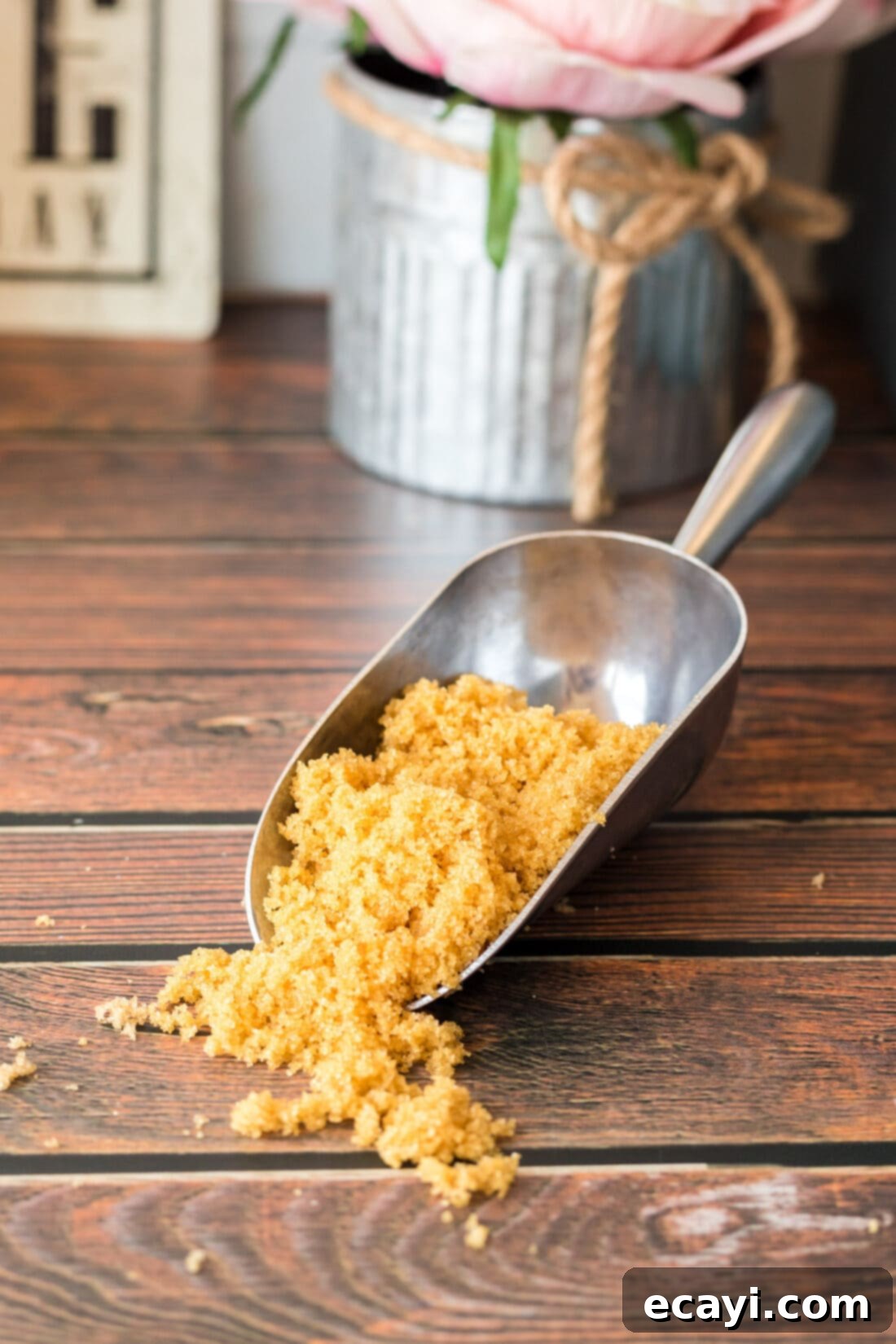
Delicious Serving Suggestions for Homemade Brown Sugar
Your freshly made brown sugar substitute is incredibly versatile and can be incorporated into an endless variety of dishes, both sweet and savory. In the world of desserts and confections, brown sugar is an indispensable ingredient. It brings moisture and chewiness to cookies, richness to bars, depth to frostings, and a tender crumb to cakes. Think of classic oatmeal cookies, pecan pie, or a rich caramel sauce – all benefit immensely from the unique qualities of brown sugar.
Beyond the sweet, don’t underestimate its power in savory applications. Brown sugar creates a lovely caramelized crust on roasted meats, adds a touch of balancing sweetness to glazes for vegetables like Brussels sprouts or sweet potatoes, and perfectly complements fish and chicken marinades. It’s fantastic in BBQ rubs, teriyaki sauces, and even some salad dressings, lending a subtle depth and enhancing overall flavor.
Inspiring Recipes to Use Your Brown Sugar In
Put your homemade brown sugar to good use with these delicious recipes that truly shine with its rich flavor:
- Banana Fritters
- Cedar Plank Salmon
- Bacon Wrapped Little Smokies
- Cinnamon Streusel Muffins
- Mini Pineapple Upside Down Cakes
- Baked Beans (for a touch of sweetness and depth)
- Oatmeal Raisin Cookies (for that quintessential chewy texture)
- Homemade BBQ Sauce (the molasses flavor is key)
I love to bake and cook and share my kitchen experience with all of you! Remembering to come back each day can be tough, that’s why I offer a convenient newsletter every time a new recipe posts. Simply subscribe and start receiving your free daily recipes!
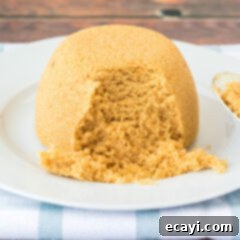
Brown Sugar Substitute
IMPORTANT – There are often Frequently Asked Questions within the blog post that you may find helpful. Simply scroll back up to read them!
Print It
Pin It
Rate It
Save ItSaved!
Ingredients
- 1 cup granulated white sugar
- 1 Tablespoon molasses
Things You’ll Need
-
Mixing bowls
-
Vinyl gloves
-
Air tight container
Before You Begin
- This recipe is for light brown sugar, but you can easily make dark brown sugar by adding an extra tablespoon of molasses to the mix. The only difference between light and dark is the molasses content which will result in richer flavor when there is more and can even aid in the color of some of your baked goods.
-
I find it easier to wear vinyl gloves as the molasses won’t stick to the gloves.
Instructions
-
Using your fingers, rub the molasses into the sugar into completely combined and no molasses remains.
-
Store in an airtight container for up to 3 months.
Nutrition
The recipes on this blog are tested with a conventional gas oven and gas stovetop. It’s important to note that some ovens, especially as they age, can cook and bake inconsistently. Using an inexpensive oven thermometer can assure you that your oven is truly heating to the proper temperature. If you use a toaster oven or countertop oven, please keep in mind that they may not distribute heat the same as a conventional full sized oven and you may need to adjust your cooking/baking times. In the case of recipes made with a pressure cooker, air fryer, slow cooker, or other appliance, a link to the appliances we use is listed within each respective recipe. For baking recipes where measurements are given by weight, please note that results may not be the same if cups are used instead, and we can’t guarantee success with that method.
